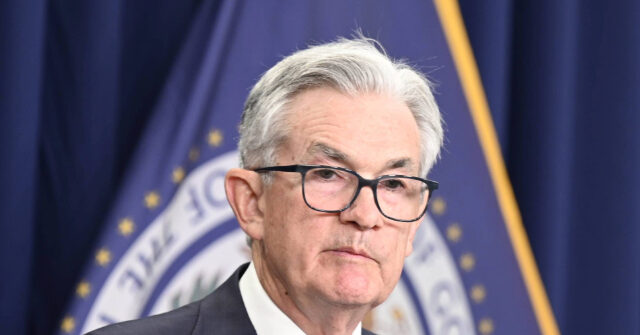Federal Reserve Chairman Jerome Powell indicated on Friday that the central bank is ready to start cutting its key interest rate, possibly as early as next month, in an effort to prevent further erosion in the labor market while continuing to monitor inflation closely.
“The time has come for a policy shift,” Powell stated in a closely watched speech at the Federal Reserve’s annual symposium in Jackson Hole, Wyoming. He stressed that the pace and timing of any rate cuts will hinge on incoming data, the changing economic landscape, and the balance of risks.
Powell said that inflation has resumed its downward trajectory following a brief resurgence earlier this year.
“My confidence has grown that inflation is on a sustainable path back to 2 percent,” he said.
Although Powell’s comments shed light on the Fed’s immediate plans, uncertainties persist regarding the central bank’s strategy after September. His speech represents a significant shift in the Fed’s two-year campaign to curb inflation, during which the labor market has shown surprising resilience despite aggressive rate hikes.
For the past year, the Fed has kept its benchmark interest rate within a range of 5.25 to 5.5 percent—the highest in more than two decades—as part of its strategy to elevate borrowing costs across the economy in order to control inflation.
However, as inflation approaches the Fed’s 2 percent target, signs of stress in the labor market are raising concerns among Fed officials, who fear that sustained high rates could jeopardize economic stability. The July employment report, which showed weaker-than-expected job growth, added to these concerns and rattled financial markets.
Furthermore, the Labor Department’s recent revisions to nonfarm payroll estimates revealed that the economy added roughly 818,000 fewer jobs than previously reported, indicating that the labor market may have weakened earlier than initially believed.
“We do not seek or welcome further cooling in labor market conditions,” Powell said, noting that the slowdown in hiring was becoming increasingly evident.
A Strategic Pivot
Powell’s speech underscores the Fed’s cautious approach. After initially being slow to respond to the inflationary pressures that arose during the pandemic, the central bank is now keen to avoid another policy misstep as price increases begin to moderate. The success of this strategy will determine whether the economy can achieve a so-called soft landing, where inflation is brought under control without triggering a recession.
“Our objective has been to restore price stability while maintaining a strong labor market, avoiding the sharp increases in unemployment that characterized earlier disinflationary episodes when inflation expectations were less well anchored,” Powell said. “While the task is not complete, we have made a good deal of progress toward that outcome.”
Fed minutes released this week showed that most Fed officials indicated at their July meeting that a rate cut would likely be warranted in September if economic data continued to align with their expectations.
Although inflation remains above the Fed’s target, it has declined significantly from its peak in 2022. The central bank’s preferred inflation gauge, the personal consumption expenditures price index, rose 2.5 percent in June compared with a year earlier.
Outlook Remains Uncertain
Consumers and businesses grappling with high borrowing costs for mortgages, auto loans, and other credit are likely to welcome Powell’s comments. Investors are widely anticipating a quarter-point rate cut at the Fed’s next policy meeting on September 17-18.
Although many progressives have called on the Fed to cut, Powell’s words may not be all that welcome by Kamala Harris and Democrats because they emphasized the risk of further weakening of the labor market.
Nonetheless, significant uncertainties remain regarding the Fed’s path forward. Another weak jobs report could prompt a larger-than-expected 50 basis point rate cut in September. Additionally, there is ongoing debate about the pace and size of subsequent rate cuts in the months ahead. Some analysts expect that the Fed will cut at the November and December meetings (there is no October meeting), while others believe the Fed will move at a more measured pace, perhaps cutting every other meeting to see how the economy adjusts to lower rates.
Powell did not provide any clarity on the Fed’s plans beyond the September meeting.
